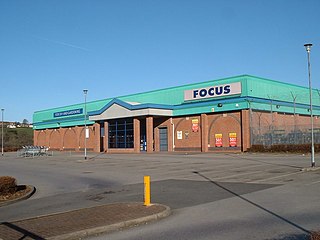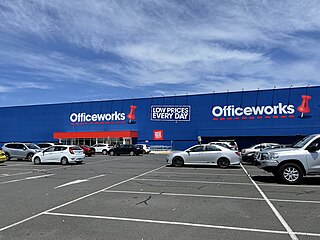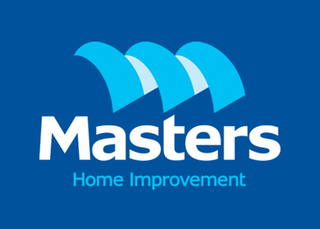
Hardware stores, sometimes known as DIY stores, sell household hardware for home improvement including: fasteners, building materials, hand tools, power tools, keys, locks, hinges, chains, plumbing supplies, electrical supplies, cleaning products, housewares, tools, utensils, paint, and lawn and garden products directly to consumers for use at home or for business. Many hardware stores have specialty departments unique to its region or its owner's interests. These departments include hunting and fishing supplies, plants and nursery products, marine and boating supplies, pet food and supplies, farm and ranch supplies including animal feed, swimming pool chemicals, homebrewing supplies and canning supplies. The five largest hardware retailers in the world are The Home Depot, Lowe's, Kingfisher of the United Kingdom, Obi of Germany, and Leroy Merlin of France.

The Warehouse Group (TWG) was established by Stephen Tindall in 1982 and is the largest retail group in operation in New Zealand. It is a corporate conglomerate that comprises The Warehouse, Warehouse Stationery, Torpedo7, Noel Leeming, 1-day, and TheMarket.

Focus DIY was a privately owned chain of DIY stores in the United Kingdom. It served the consumer DIY market sector, and most stores had some form of garden centre.

Homebase is a British home improvement retailer and garden centre with stores across the United Kingdom and Republic of Ireland. Founded by Sainsbury's and GB-Inno-BM in 1979, the company was owned by Home Retail Group from October 2006, until it was sold to the Australian conglomerate Wesfarmers in January 2016.
Hardwarehouse was a home improvement chain in Australia. The chain was an offshoot of BBC Hardware, which was owned by Burns Philp and then Howard Smith Limited, and had stores in Australia and New Zealand. It was established by BBC Hardware as a way to implement and develop the adopted hardware warehouse concept which was based on overseas chains B&Q and Home Depot.

A big-box store is a physically large retail establishment, usually part of a chain of stores. The term sometimes also refers, by extension, to the company that operates the store. The term "big-box" references the typical appearance of buildings occupied by such stores.
Habitat, is a brand of household furnishings in the United Kingdom and the main homewares brand within the Sainsbury's group.

Wesfarmers Limited is an Australian conglomerate, headquartered in Perth, Western Australia. It has interests predominantly in Australia and New Zealand, operating in retail, chemical, fertiliser, industrial and safety products. With revenue of A$30.8 billion in the 2020 financial year, it is one of Australia's largest companies by revenue. Wesfarmers is also one of the largest private employers in Australia, with approximately 107,000 employees.

Officeworks is a chain of Australian office supplies stores operated under parent company Wesfarmers.

Home Retail Group plc was a home and general merchandise retailer based in the United Kingdom. It was the parent company of Argos and Habitat, and once owned the do it yourself chain Homebase before selling it to the Australian retailer Wesfarmers in February 2016. Home Retail Group was listed on the London Stock Exchange, until it was acquired by the British supermarket company Sainsbury's for £1.4 billion on 2 September 2016.

Briscoe Group is a New Zealand retail chain. It has 92 stores throughout New Zealand trading under the Briscoes Homeware (48) and Rebel Sport (44) nameplates.

Mitre 10 is an Australian retail and trade hardware store chain. Operations are based on a cooperative system, where the store owners are members of the national group and each has voting rights. The chain name references the mitre joint. There are over 400 "Mitre 10" and its associated "True Value Hardware" franchises throughout Australia.

Coles Group Limited is an Australian public company operating several retail chains. Its chief operations are primarily concerned with the sale of food and groceries through its flagship supermarket chain Coles Supermarkets, and the sale of liquor through its Coles Liquor outlets. Since its foundation in Collingwood, Victoria in 1914, Coles has grown to become the second-largest retailer in Australia after its principal rival, Woolworths, in terms of revenue.

Masters Home Improvement was an Australian home improvement chain operated by two retailers; Woolworths Limited and Lowe's Home Improvement. It was established as a way for Woolworths Limited to enter the hardware retail market, which has been historically dominated by Bunnings Warehouse, owned by rival Wesfarmers. These two companies also compete with each other with groceries, liquor, fuel and general merchandise. Most of the stores shared the same format of conventional Lowe's stores and borrowed elements from Bunnings Warehouse for the garden and trade areas.
Mitre 10 is a major New Zealand chain of home improvement stores established in June 1974. It sells a range of household hardware, building supplies, heaters, air conditioners, garden products, barbeques and camping gear.
Howard Smith Limited was an Australian industrial company. Founded in 1854 as a shipping company, it later diversified into coal mining, steel production, stevedoring, travel, railway rolling stock building, sugar production and retail. Its divisions began to be sold off in the 1990s with the remainder taken over by Wesfarmers in August 2001.
Independent Timber Merchants or the Independent Timber Merchants Society is a New Zealand co-operative of independent building supplies and hardware retailers. Its stores sell a range of products to both tradespeople and consumers, including building supplies, power tools, kitchens and paint.



















